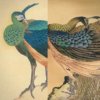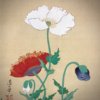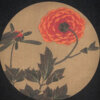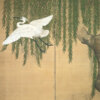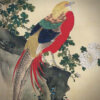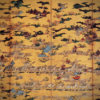Araki Jippo: Innovative Bird-and-Flower Paintings Challenged by a Conservative Painter
Shikikachōzu (Flowers and Birds of the Four Seasons)
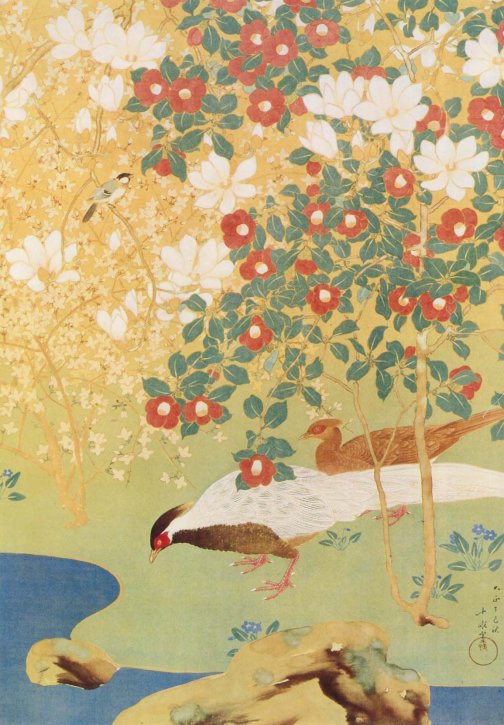
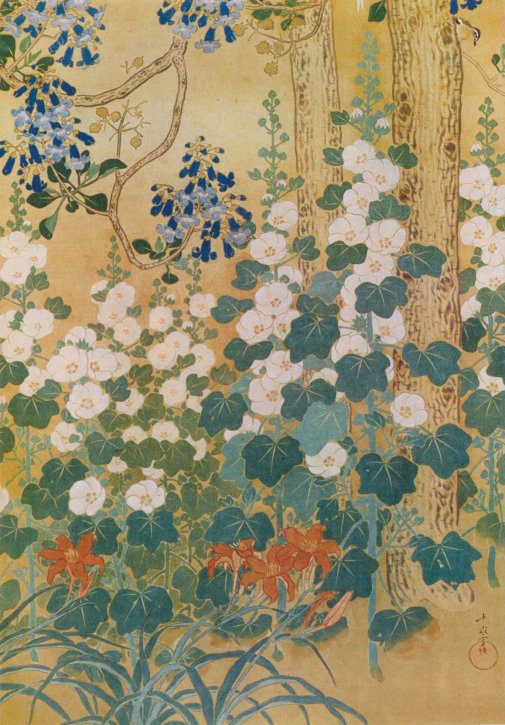
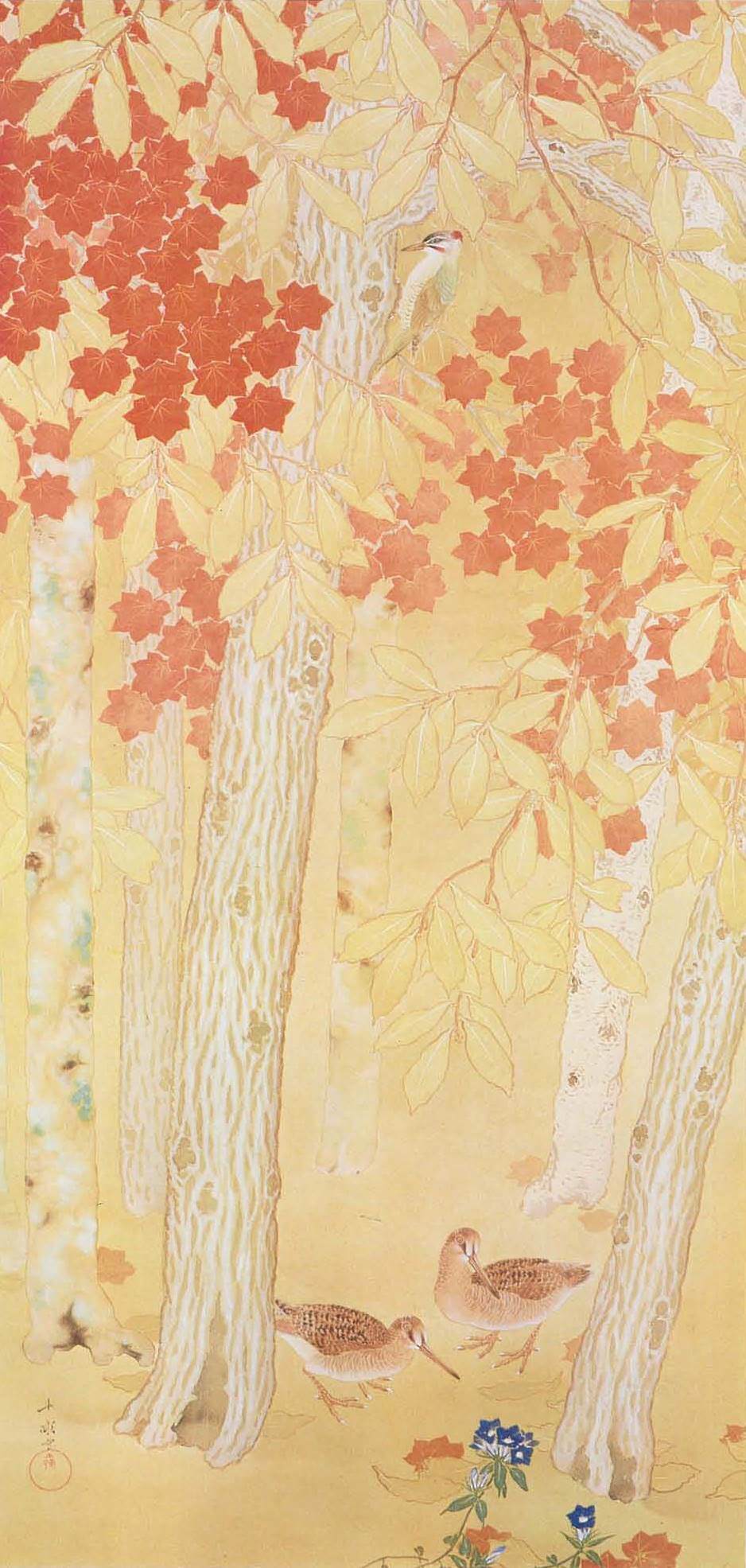
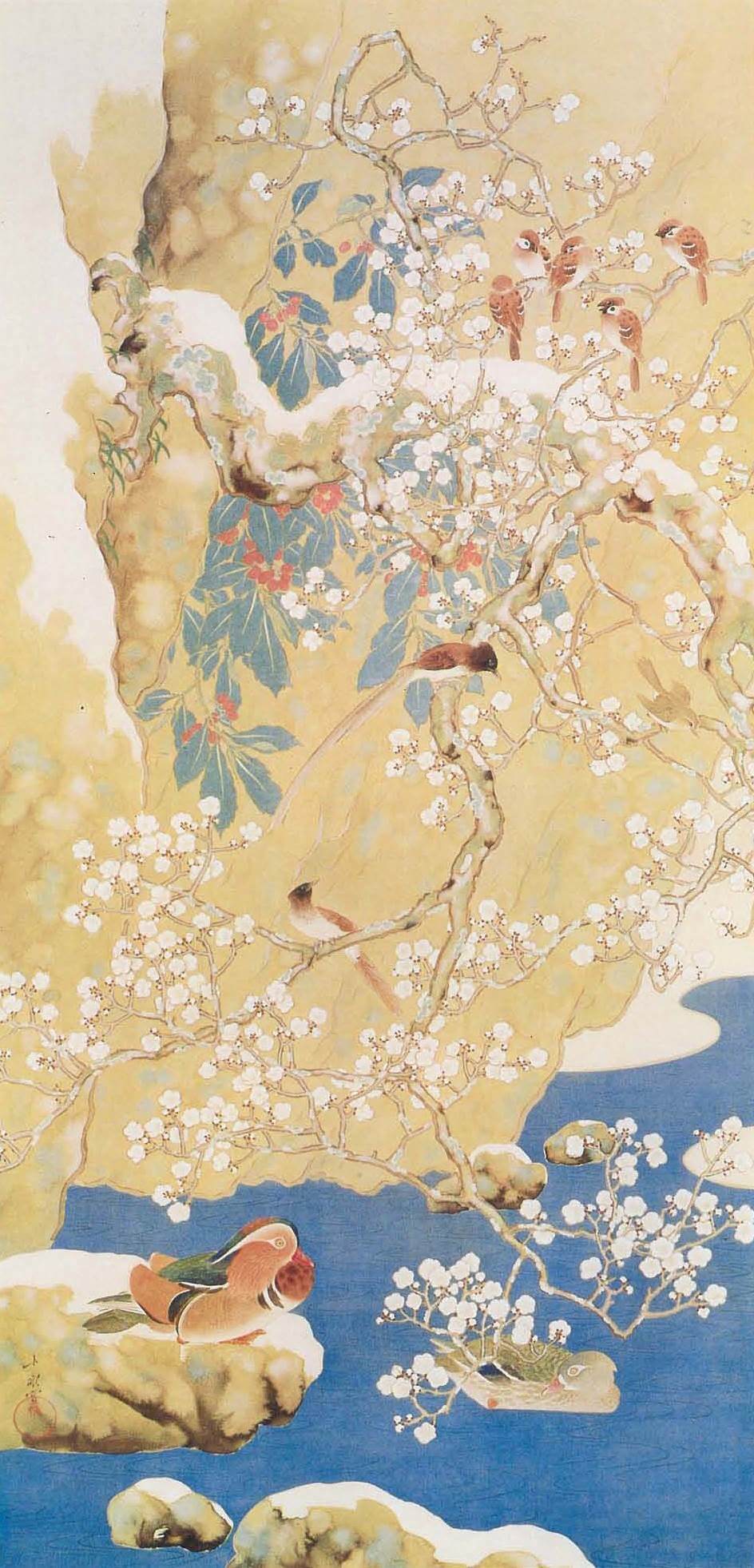
Birds in each season in addition to jazzy natural colorings such as magnolia, camellia, forsythia and violet in the spring, hollyhock and day in the summer, autumn foliage of maple and Japanese emperor oak with lily gentian in autumn, and white plum blossoms and red fruit of aucuba are arranged in the picture, which looks a glamorous embroidery. These were exhibited to the 11th Bunten Exhibition as Yonpukutsui (that is a set of 4 hanging scrolls mounted paintings such as a series of the 4 seasons). In the Exhibition, a new momentum to breathe a new breeze into the exhibition acted on the traditional Bunten Exhibition that were falling in mannerism at last. For example, a piece of work Hirafuku Hyakusui exhibited based on his collection of old rubbed copies in China, which attracted the attentions so that the ancient painting techniques could be used for the modern painting and “Hikasegi” (A day work to live) Takeuchi Seihō who worked in Kyoto and were unrivaled with any other painters especially for the field of flower-and-bird paintings drew a woman who took a rest in Honganji Temple while working a day to earn living expenses to pick up a snap of workers, which also attracted the attentions.
Under these circumstances, the bird-and-flower paintings drawn by Araki Jippo and other painters who used to belong to the conservatives, could not help being affected by the trend more or less. Although this “Shikikachōzu (Flowers and Birds of the Four Seasons)” also retains the typical composition and painting technique for the traditional bird-and-flower paintings here, there and everywhere, the depiction of Western-style painting pattern was assimilated in such as the perspective of clump and subtle change of the lighting , which can definitely shows the new attempt to express the transition of the nature more realistically. However, on the other hand, the true element of Jippo was yet in the bird-and-flower paintings that featured the moderate decorativeness so that he could have many fans who loved the painting style. In his later years, he drew pieces of works mainly using sumi ink, which was given refreshing impression outstandingly among the Japanese paintings that mostly tended to go for painting technique using oil painting styled thick painting at that time.

